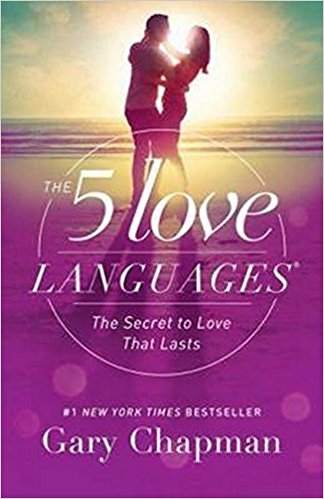The 5 Love Languages Summary

4 min read ⌚
 The Secret to Love That Lasts
The Secret to Love That Lasts
Love is one, universal and universally intelligible language, right? Wrong – says Gary Chapman! Love is expressed in five different languages – and you need to learn to translate them well if you want eternal love!
But, before that, learn “The 5 Love Languages”!
About Gary Chapman
 Gary Chapman is a “New York Times” bestselling author and love/marriage counselor. He is most famous for his “Five Languages of Love” series of books, which, in addition to the original 1995 work, includes “The 5 Love Languages for Men,” “The 5 Love Languages of Teenagers” and “The 5 Love Languages Singles Edition.”
Gary Chapman is a “New York Times” bestselling author and love/marriage counselor. He is most famous for his “Five Languages of Love” series of books, which, in addition to the original 1995 work, includes “The 5 Love Languages for Men,” “The 5 Love Languages of Teenagers” and “The 5 Love Languages Singles Edition.”
“The 5 Love Languages Summary”
Poets got it all wrong!
Falling in love is easy; staying in love is the difficult part.
And even science backs this. For example, American psychologist Dorothy Tennov, a leading authority on romantic love and limerence (a term she coined), discovered that most people are in love for no more than two years.
Afterward, it’s all routine.
And it can’t be any different because the physiological part of love – hormones, infatuation, the need to be in someone’s company – naturally fades with time. And if you don’t learn to communicate your love with your partner, you’re left with nothing valuable afterward.
Gary Chapman says that learning to communicate with your partner lovingly is nothing different from learning to communicate with someone who speaks a different language. At least one of the two – and in the best-case scenario: both – will have to learn the other one’s language.
And love has five different languages.
First of all, words of affirmation.
The most obvious language of love is language itself. Some people want to know they’re loved and love to hear words of encouragement and read notes and letters all the time. They take insults and criticism as the most brutal attack on love you can ever imagine.
The second language of love is quality time.
Spending time with your partner doesn’t mean looking at your smartphone every few seconds. It’s giving him or her the full, undivided attention. Distractions and lack of one-on-one time is a big no-no!
Receiving gifts is the third language of love.
Some people appreciate another person’s dedication to a relationship in terms of remembered birthdays and anniversaries. And the thoughtfulness of a present.
The fourth language is acts of service.
Or, in other words, the immaterial form of gifts. Giving a helping hand, alleviating your beloved’s workload. In this case, making someone else’s request a priority is the same as saying “I like him/her better than you.”
Finally, the fifth language of love is physical touch.
So, we went the full circle: from full verbal – to nonverbal. This one’s self-explanatory: hugging, kissing, putting the needs of the partner first when making love… Obviously, one of the things you must avoid in this case is lack of intimacy. It translates to: “You’re repelling.”
Knowing the five languages of love is merely the beginning. Naturally, finding the one that best describes your definition of love is the second step. Then, the third one is discovering your partner’s love language.
Finally, the fourth step is – well, eternal bliss.
Key Lessons from “The 5 Love Languages”
1. And They Lived Happily… Two Years Max
2. Communication is the Key – and Love Has Five Languages
3. Understand Your Partner’s Love Language
And They Lived Happily… Two Years Max
The moment you fall in love, you’re absolutely sure that you’ve found the right one. And this goes on for some time. But, psychologists have discovered that that some time is no more than two years. Because that’s exactly how long your body’s physical response translates to in-love emotions.
After all, evolution wasn’t really interested in pressuring humans into monogamy for millions of years.
Communication is the Key – and Love Has Five Languages
However, things changed and, nowadays, you can be happy in a monogamous relationship. The goal: just learn to communicate with your partner.
Because, you see, love has five languages. The first among them is language itself: words of affirmation. The second is quality time, followed by receiving gifts and acts of service. The final one is physical touch.
Understand Your Partner’s Love Language
What this all boils down to is very simple truism: everyone understands love differently.
For someone love is a note by the bed left each morning, and for someone else – it’s just doing the dishes. A third person thinks that love is saying “I love you” many times a day, and for a fourth one is all about not forgetting the anniversary. Finally, for someone it can even be just the joy of sex.
Either way, your best shot at being happy in a relationship is learning the love language of your partner. And translating your love into it.
Of course, your partner should do the same as well.
Like this summary? We’d like to invite you to download our free 12 min app, for more amazing summaries and audiobooks.
“The 5 Love Languages” Quotes
I am amazed by how many individuals mess up every new day with yesterday. Share on X People tend to criticize their spouse most loudly in the area where they themselves have the deepest emotional need. Share on X What we do for each other before marriage is no indication of what we will do after marriage. Share on X Something in our nature cries out to be loved by another. Isolation is devastating to the human psyche. That is why solitary confinement is considered the cruelest of punishments. Share on X The in-love experience does not focus on our own growth or on the growth and development of the other person. Rather, it gives us the sense that we have arrived and that we do not need further growth. Share on X







